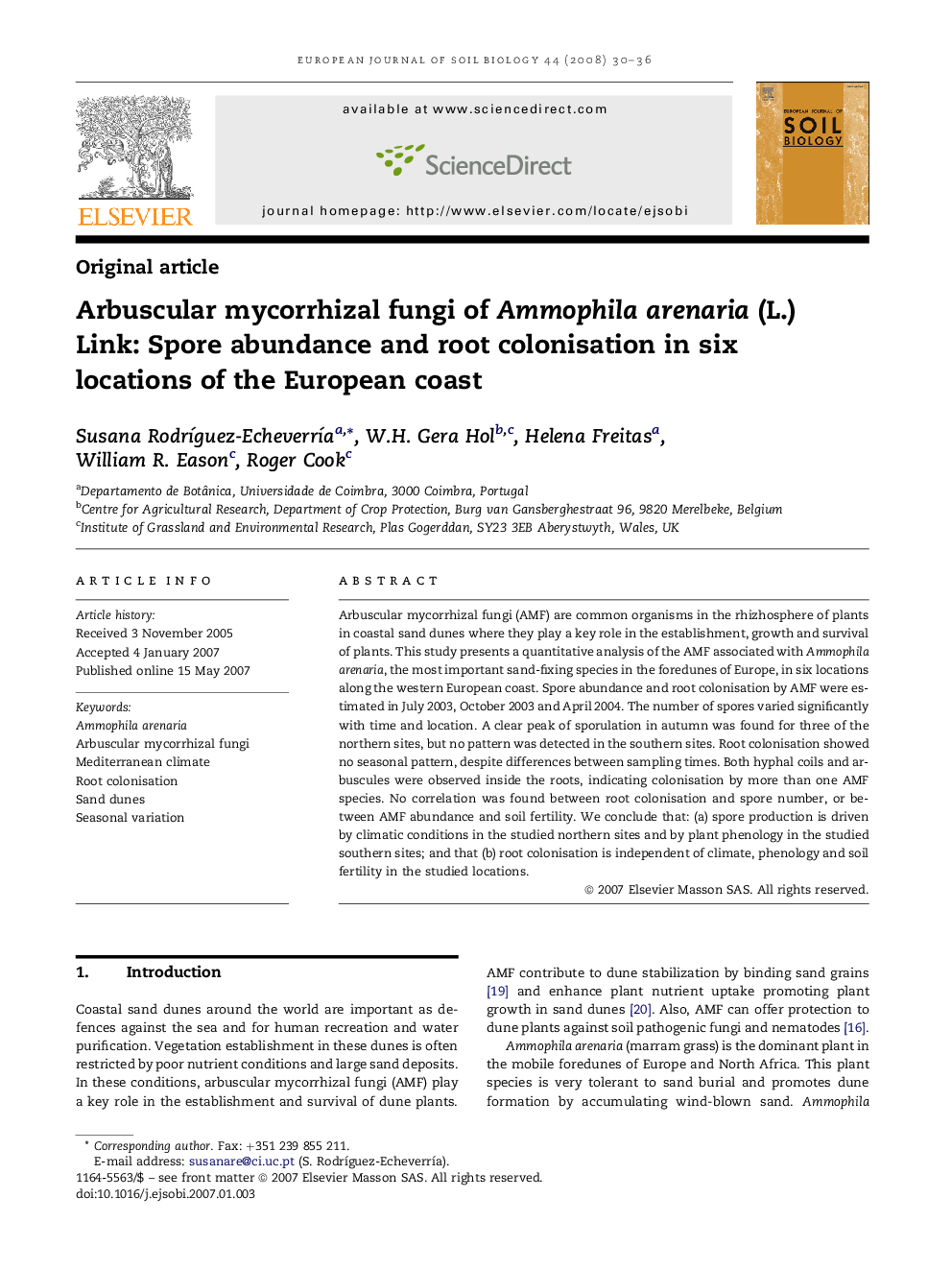| Article ID | Journal | Published Year | Pages | File Type |
|---|---|---|---|---|
| 4392350 | European Journal of Soil Biology | 2008 | 7 Pages |
Arbuscular mycorrhizal fungi (AMF) are common organisms in the rhizhosphere of plants in coastal sand dunes where they play a key role in the establishment, growth and survival of plants. This study presents a quantitative analysis of the AMF associated with Ammophila arenaria, the most important sand-fixing species in the foredunes of Europe, in six locations along the western European coast. Spore abundance and root colonisation by AMF were estimated in July 2003, October 2003 and April 2004. The number of spores varied significantly with time and location. A clear peak of sporulation in autumn was found for three of the northern sites, but no pattern was detected in the southern sites. Root colonisation showed no seasonal pattern, despite differences between sampling times. Both hyphal coils and arbuscules were observed inside the roots, indicating colonisation by more than one AMF species. No correlation was found between root colonisation and spore number, or between AMF abundance and soil fertility. We conclude that: (a) spore production is driven by climatic conditions in the studied northern sites and by plant phenology in the studied southern sites; and that (b) root colonisation is independent of climate, phenology and soil fertility in the studied locations.
